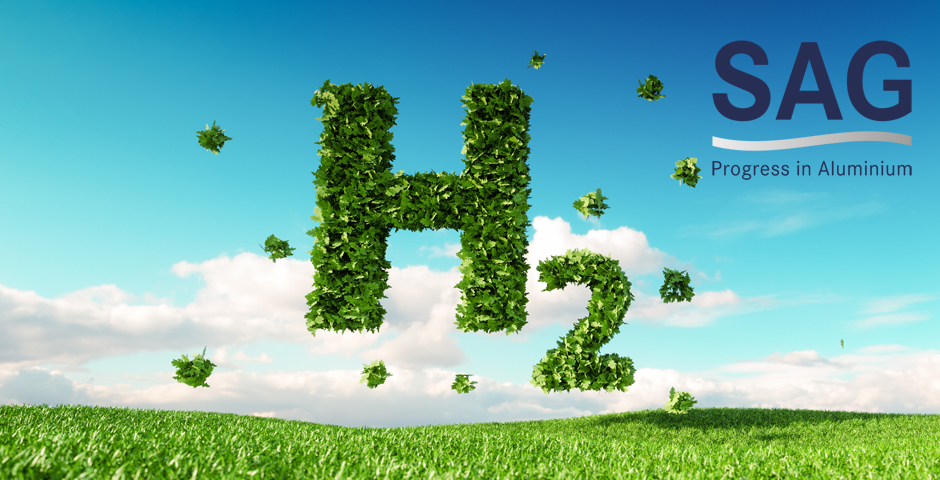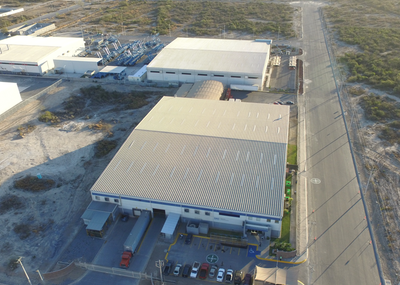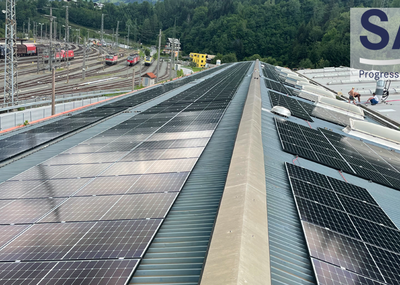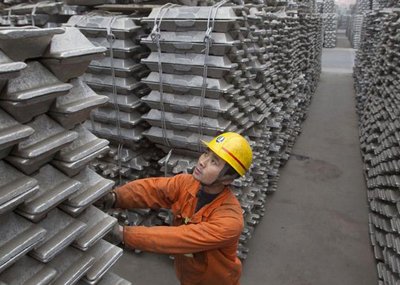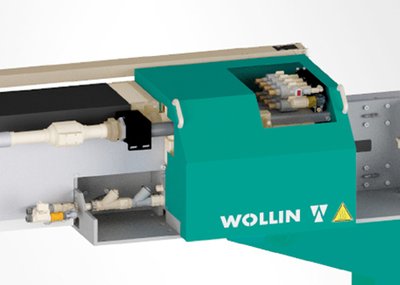How do you assess the potential of hydrogen in heavy-duty transport in the coming years?
Hydrogen is very well suited as a fuel for heavy-duty transport. In particular, range and refuelling time are comparable to diesel trucks, 2 factors that are of great importance for economic efficiency in long-distance transport. The first fleets powered by gaseous hydrogen are already in use, e.g. in Switzerland where 100 H2 trucks are currently in regular operation. This number is expected to grow to 1600 vehicles by 2025. Similar projects are underway in other European countries, and we will see LH2 trucks on the road by 2025 at the latest.
What additional areas of application are you addressing with your solutions? And how do you estimate the market potential there?
We see further areas of application for our LH2 cryo-tank solutions, particularly in the transport sector (rail, air or shipping). In these areas we can contribute to decarbonisation without having to accept significant cuts in performance or efficiency compared to fossil energy sources.
What is the current status of your liquid H2 refuelling project? What has been achieved so far?
The development of our LH2 tank has now been running for about 3 years. In Q4 2021, the first certifiable prototype was intensively tested with liquid hydrogen. At the moment, trials are underway for integration on the vehicle and powertrain. The results so far are promising and provide a good basis for further optimisation of the tank design.
What are the next steps (with an indication of the timeframe in each case)?
The next step is to obtain unrestricted approval for this tank generation for operation on European roads (by the end of 2022).
Subsequently, the industrialisation and standardisation of the manufacturing process, which are necessary for series production in the automotive sector, are on the agenda. The tank must also undergo extensive product validation to ensure the required service life. For this purpose, it is essential to test the tank extensively in regular road use, also in customer hands (2023-2025). This will be followed by the development of series production.
What are the biggest technical challenges that still have to be faced and overcome along the way?
SAG has many years of experience with the series production of LNG cryogenic tanks. However, the even significantly lower storage temperature of LH2 (-250 °C) considerably increases the demands on the tank's components, and material compatibility with H2 is also an issue. Another major challenge is the avoidance of H2 boil-off, which requires excellent vacuum insulation as well as highly specialised tank design (pipe routing, etc.). Making LH2 cryogenic tank technology practical and, above all, economically competitive, while meeting the customer's demand for maximum performance, functionality and capacity, is probably the biggest challenge.
What concepts do you use to tackle each of these challenges?
The example of material compatibility is a good way to describe our approach: Due to the low storage temperature as well as the risk of H2 embrittlement, high-alloy stainless steel is the most suitable material for LH2 tank production. The main disadvantage is the price as well as the weight of the construction. In order to find an appropriate balance between the diametrical requirements of the tank design, it is important to be in exact agreement with the customer. This also applies to our cooperation with the numerous highly specialised supplier companies to enable a smooth integration of the various components into the tank system. Teamwork, beyond our own company, is probably our most important concept for solving the challenges ahead.
How do you assess the chances of liquid H2 compared to the alternative gaseous/high pressure?
The cryogenic storage of hydrogen makes sense wherever the advantages of this storage solution, first and foremost higher energy density and lower costs, outweigh the disadvantages in the application, e.g. H2 loss during long service lives. The use of liquid H2 is thus predestined for cost-driven applications with high energy requirements, whose operating cycles have hardly any idle time. The additional energy expenditure or the higher costs incurred in the liquefaction of H2 can also be justified where higher energy density leads to a decisive cost reduction (e.g. long-distance transport).
What opportunities do you see in cryo gas as a “link” between the two technologies?
Cryo gas offers an opportunity to further increase the energy density of the storage system compared to LH2. Also, H2 loss due to boil-off is a much smaller factor, as the pressure vessel is designed up to 350 bar. This is in contrast to the combined requirements of the system in terms of thermal insulation as well as high-pressure application. Combining a vacuum-compatible high-pressure vessel with the requirements of predominantly mobile applications is a major challenge. 9.
What does the existence of different alternatives mean for the H2 refuelling network?
To what extent is it sensible and economically feasible to rely on different technologies for refuelling heavy-duty trucks?
Especially in the transition phase, we will see both storage systems and thus also refuelling alternatives on heavy-duty trucks. Subsequently, the technologically superior, but above all more cost-efficient variant will prevail. From an economic point of view, it does not make sense to drive on two tracks. For the breakthrough of H2 as a fuel, it is therefore immensely important that politicians quickly set the course for the construction of a filling station infrastructure - at least once along the main traffic routes.
In your opinion, how do the costs of the different technologies compare?
The relative costs of gas and liquid H2 storage systems were estimated by CNH. The LH2 system comes off significantly better. Of course, for a holistic view one must also take into account the cost requirement for the production of the stored medium as well as the transport. There is unanimity on the target price: from a price of 4-5 €/kg H2, an H2-fuelled truck will be able to be operated at the same cost as current diesel vehicles.
What signals are you receiving from politics and business regarding a decision?
A concrete decision is urgently needed. It would be important, similar to e-mobility, to generally create more incentives to switch to sustainable energy sources. In both cases, large investments will be necessary to convert the infrastructure. In addition to the already high risks of such projects, a lack of framework conditions from politics will lead to further delays and thus to further increases in CO2 emissions.
When will a decision have to be made?
The targets set to limit global warming are already almost impossible to meet today. In this respect, such fundamental decisions should better be made today than tomorrow.
To what extent are you also concerned with the topic of H2 production, for example via electrolysers?
The green production of hydrogen is of course a basic prerequisite for the use of our LH2 storage. We are therefore in talks with possible cooperation partners in order to better align this important part of the H2 cycle economy with our requirements and possibilities.
Answers from Thomas Stepan, R&D Team LH2 cryo tank Technology, Salzburger Aluminium Group

